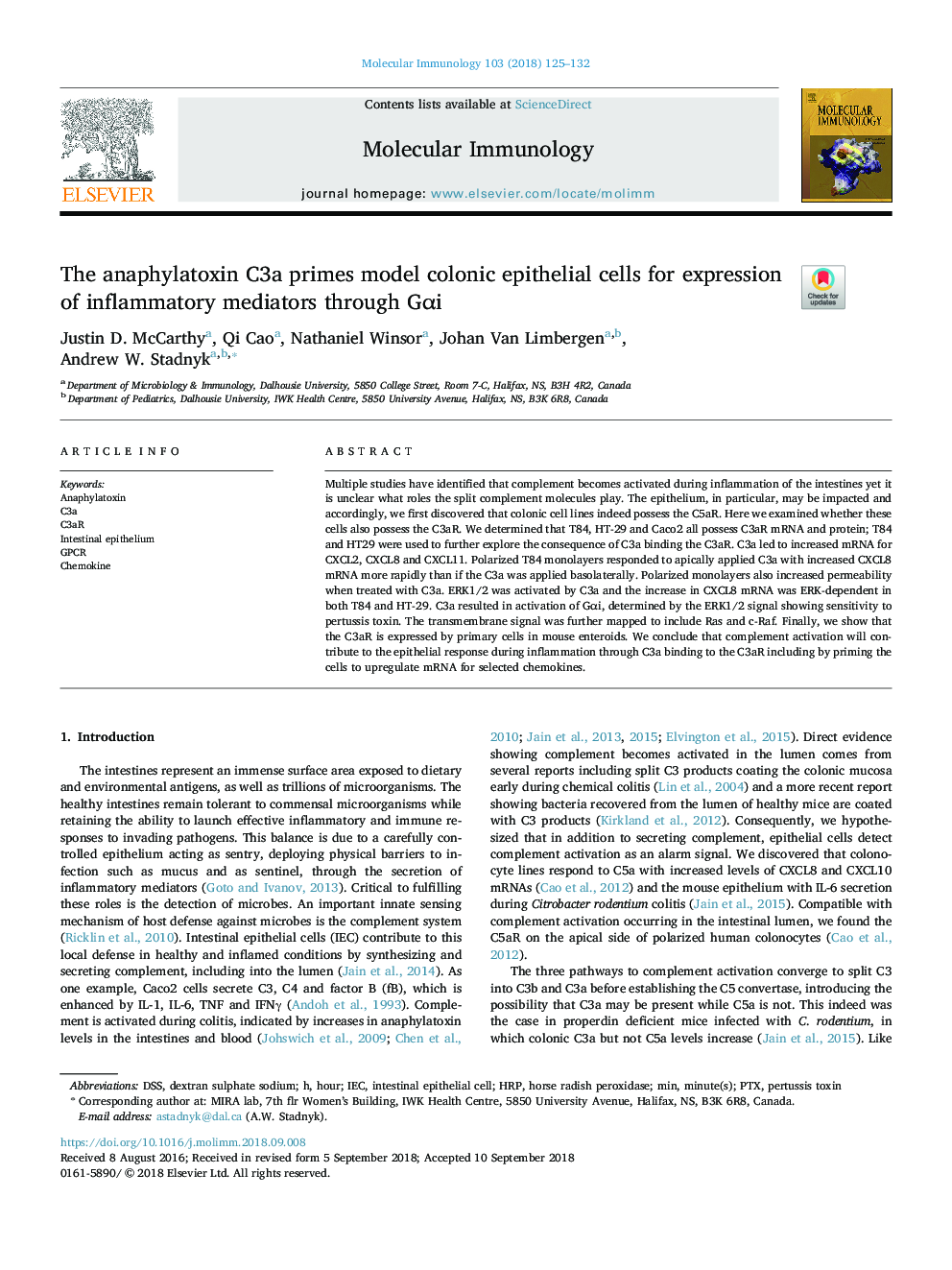| Article ID | Journal | Published Year | Pages | File Type |
|---|---|---|---|---|
| 11030703 | Molecular Immunology | 2018 | 8 Pages |
Abstract
Multiple studies have identified that complement becomes activated during inflammation of the intestines yet it is unclear what roles the split complement molecules play. The epithelium, in particular, may be impacted and accordingly, we first discovered that colonic cell lines indeed possess the C5aR. Here we examined whether these cells also possess the C3aR. We determined that T84, HT-29 and Caco2 all possess C3aR mRNA and protein; T84 and HT29 were used to further explore the consequence of C3a binding the C3aR. C3a led to increased mRNA for CXCL2, CXCL8 and CXCL11. Polarized T84 monolayers responded to apically applied C3a with increased CXCL8 mRNA more rapidly than if the C3a was applied basolaterally. Polarized monolayers also increased permeability when treated with C3a. ERK1/2 was activated by C3a and the increase in CXCL8 mRNA was ERK-dependent in both T84 and HT-29. C3a resulted in activation of Gαi, determined by the ERK1/2 signal showing sensitivity to pertussis toxin. The transmembrane signal was further mapped to include Ras and c-Raf. Finally, we show that the C3aR is expressed by primary cells in mouse enteroids. We conclude that complement activation will contribute to the epithelial response during inflammation through C3a binding to the C3aR including by priming the cells to upregulate mRNA for selected chemokines.
Keywords
Related Topics
Life Sciences
Biochemistry, Genetics and Molecular Biology
Molecular Biology
Authors
Justin D. McCarthy, Qi Cao, Nathaniel Winsor, Johan Van Limbergen, Andrew W. Stadnyk,
